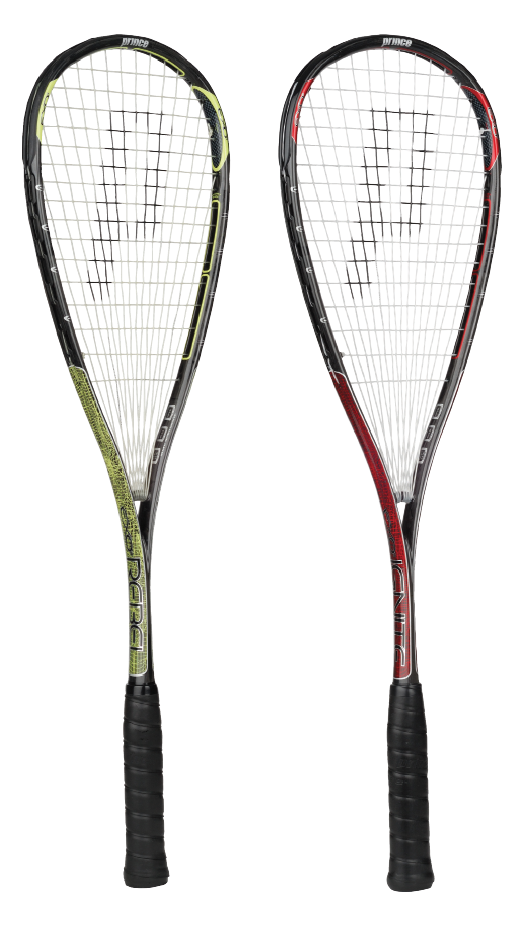 Two years ago, Prince introduced their radical O-ports in their squash racquets after first introducing them to the tennis world. Now the company has taken it a step further with elongated holes at the top and sides of their frames—and the only way to put a name to them is to call them EXO3. “EXO” stands for Exoskeleton, which is fitting because the aforementioned elongated ports require a specialized “bumper” that serves multiple purposes.
Two years ago, Prince introduced their radical O-ports in their squash racquets after first introducing them to the tennis world. Now the company has taken it a step further with elongated holes at the top and sides of their frames—and the only way to put a name to them is to call them EXO3. “EXO” stands for Exoskeleton, which is fitting because the aforementioned elongated ports require a specialized “bumper” that serves multiple purposes.
The obvious need for the bumper is to faciliate stringing the frame. But Prince refers to the bumpers as “Energy Bridges” that fit into the “Energy Channels” (i.e., the elongated ports). According to Prince, the Energy Bridges “increase virtual head size” by expanding the distance across the frame over which the string travels (thereby increasing the size of the sweet spot). The other advantage of the Energy Bridge is that the string bed is separated from the frame itself which reduces vibration. Finally, the Energy Bridge and Channels, in concert, reduce the energy disipation on contact with the ball which, in turn, allows the player to put the re-captured energy back into the ball.
That’s the technical side of the new EXO3 Rebel and Ignite. For those of us playing with the racquets, both are welcome additions to the Prince line of sticks. Both feature 16 mains and crosses, fan string pattern and the power ring. The Rebel (sporting a yellow spider web-like paint job) weighed in at 156g (strung), while the Ignite tipped our scales at 162g. Both are slightly head heavy. Interestingly, the balance point in the Rebel is slightly higher in the frame than the Ignite, but because of the extra few grams of weight, the Ignite feels more head heavy.
Both offer plenty of power while maintaining maneuverability for quick reflexes. Our testers felt the Ignite would be preferred by the power players, while the Rebel more for the all-court and control players. Either way, test them both to see what works best for you.





